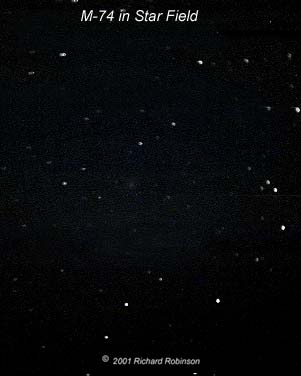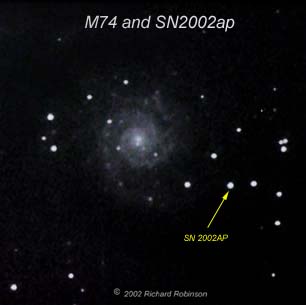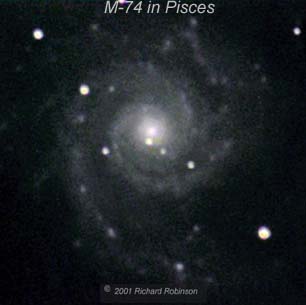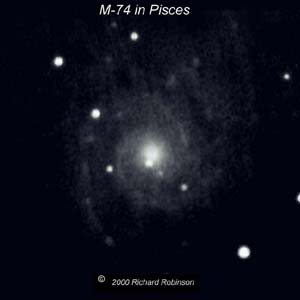|
|
|
| M-74 is a medium sized but dim galaxy. You see it almost face on, but at magnitude 10.0 you probably need at lease a 6-inch scope. It's surface brightness is very dim at magnitude 13.7 (Similar to the planet Pluto). This makes it a difficult object to view or image unless you have very dark skies. You probably can see the central core as a slightly fuzzy star, somewhat like the appearance in the wide field film image. | |
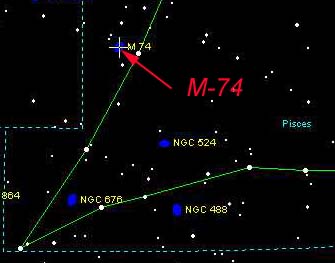 |
Size: 10.5 x 9.5 arcmin Magnitude: 10.0 Surface Brightness: 13.7 RA: 01h 36m 41.7s Dec: 15 d 47m 00s |
